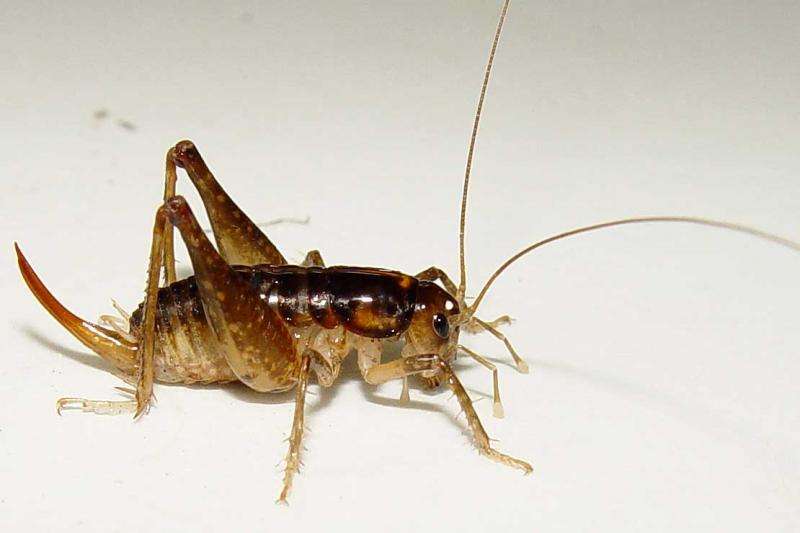New species of weta drumming in the jungle

Three new species of ground wētā and mating calls have been identified by Massey University researchers.
Research by doctoral student Briar Taylor-Smith and her supervisors Professor Steven Trewick and Associate Professor Mary Morgan-Richard of the Massey Ecology Group have reported three new ground wētā species in the New Zealand Journal of Zoology.
Two new species of ground wētā, which were previously classified as Hemiandrus maculifrons, have now been named Hemiandrus luna and Hemiandru brucei. A third species, related to the other two, has been named Hemiandrus nox.
Hemiandrus luna and Hemiandrus nox were named after Roman goddesses and Hemiandru brucei (Bruce's wētā) is named for Taylor-Smith's grandfather and mentor.
Ground wētā are found in native forest throughout the North and South Islands, as well as on numerous offshore islands. Most species of ground wētā have restricted ranges but the three new species are found on both main islands.
Professor Trewick of the Institute of Agriculture and Environment says many species of wētā are abundant in New Zealand forests and other habitats, but a lot of these have yet to be described.
"The similarity of these three species explains why they were previously treated as a single taxon, however, amongst New Zealand's wētā, ground wētā are the most poorly characterised and most in need of taxonomic and ecological work. Although ground wētā are common in many places we know little about them because they are only active at night."
Additional taxonomic and ecological work on ground wētāis needed to test the reported diversity of this genus.
Associate Professor Morgan-Richards says, "Taxonomy lies at the heart of species conservation and many large New Zealand orthopterans [order of insects] remain to be described."
"Even in 2016, there are new species to discover and important diversity to describe. We cannot conserve an animal if we do not know it exists, which is why it is so important to begin conservation by documenting our biodiversity.
"We can study the whakapapa of the species, and understand how they are related to one another, and use this information to provide the habitat the species needs to survive."
New Zealand Anostostomatidae (true wētā) includes three main lineages: giant and tree wētā, tusked wētā, and ground wētā. Together, they comprise some 60 species that occupy diverse habitats from lowland forest to the alpine zone. A separate group, the Rhaphidophoridae or cave wētā, are also being studied by the Massey team.
In related research, the mating calls of ground wētā have been recorded. Until recently it was not known that ground wētā communicated using sounds. These wētā do not have the 'ears' on their legs that many other wētā have, but it appears they use vibrations to signal to each other. The male ground wētā does this by rapidly drumming its body against the leaf it is standing on. The resulting sound is inaudible to humans but can be detected using a specialised sensor.
More information: BL Taylor-Smith et al. Three new ground wētā species and a redescription of, New Zealand Journal of Zoology (2016).
Provided by Massey University





















